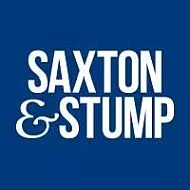- within Employment and HR topic(s)
- with Senior Company Executives, HR and Finance and Tax Executives
- in United States
- with readers working within the Accounting & Consultancy, Business & Consumer Services and Retail & Leisure industries
The new law known as the One Big Beautiful Bill Act (OBBBA) makes numerous changes to the Internal Revenue Code that affect taxes in many categories. This article addresses changes that apply to employers and employees. Employers should take action now.
The OBBBA extends or makes permanent many current tax laws that were enacted under the Tax Cuts and Jobs Act of 2017 (TCJA) that were temporary and due to expire. Some changes are retroactive to January 1, 2025, and others take effect January 1, 2026. Employers should implement changes to Payroll and HRIS systems before the end of 2025 to make sure they are properly configured and updated with tracking mechanisms. Because some changes apply retroactively, employers may need to do manual calculations.
Employers also may need to decide whether to offer certain benefits that may be ways to provide additional non-taxable income to employees as explained below. These benefits could be viewed as perks and incorporated into recruitment and retention strategies. Employers who want to offer them must develop written policies by January 1, 2026. Employers should look to Brokers and Plan Administrators for assistance with the written policies and communications to employees.
The IRS is required to publish guidance, so employers should check for updates at www.irs.gov on the OBBBA page. The first guidance published on July 14 described some of the new tax breaks. On August 7, the IRS announced that W-2s and other forms will not be changed for 2025 and these changes will be made in 2026. On August 15, the IRS published a draft W-2 for 2026. By October 2, the IRS is supposed to publish a list of occupations that as of December 2024 customarily and regularly received tips.
In addition to employer responsibilities, employees will need to take action on their individual tax returns to receive tax breaks. Seven key areas for employers and employees are outlined below:
No Tax on Overtime
The OBBBA temporarily allows non-exempt employees to claim a federal income tax deduction up to $12,500 of "qualified overtime compensation" ($25,000 for joint filers) through the end of 2028. Married employees must file a joint tax return with their spouse to claim the deduction. The deduction phases out for employees with modified adjusted gross income over $150,000 ($300,000 for joint filers).
"Qualified overtime compensation" means the pay required for hours worked over 40 in a workweek under the Fair Labor Standard Act (FLSA) (it does not include holiday pay or daily overtime in applicable states). Under the FLSA, overtime must be paid at "one and one-half" times the employee's "regular rate" of pay (as defined under the FLSA), and the "one-half" is the overtime premium. The deduction only applies to the overtime premium.
Employers must continue to withhold on all overtime compensation. W-2s will be required to state the employee's total amount of qualified overtime compensation to reduce their federal income tax on overtime premiums, the employee must claim the tax deduction on their individual tax return. Overtime compensation is still subject to Social Security, Medicare, state, and local taxes.
No Tax on Tips
The OBBBA temporarily allows employees to claim a federal income tax deduction up to $25,000 in "qualified tips" through the end of 2028. Married employees must file a joint tax return with their spouse to claim the deduction. The deduction phases out for employees with modified adjusted gross income over $150,000 ($300,000 for joint filers). "Qualified tips" means tips paid in cash, by credit card, or through tip sharing. Tips must be voluntary in the customer's discretion, and cannot be required gratuities, mandatory service charges, and non-cash tips. As stated above, the IRS must publish a list of tipped occupations that are eligible by October 2.
Employers must continue to withhold and report total compensation including tips. W-2s will be required to state the occupation and the amount of tip compensation separately. To reduce their federal income tax on tips, the employee must claim the tax deduction on their individual tax return. Tips are still subject to Social Security, Medicare, state, and local taxes.
Paid Family Medical Leave Tax Credit
The OBBBA makes permanent and expands the tax credits employers may take for payments for Paid Family and Medical Leave (PFML) which were first allowed under the TCJA temporarily. Starting in 2026, to qualify for the tax credit, employers must pay employees with 6 months of service and who are employed 20 hours per week at least 50% of their normal wage while on leave for 2-12 weeks per year.
Employers may still choose to offer PFML except in states where it is mandatory. In states with mandatory PFML, employers may now get a tax credit for paid leave that exceeds the mandated state amount. Costs may be offset with credits up to a percentage of wages covered. Employers who provide PFML under an insurance policy may now get a tax credit for a percentage of the benefit applied against total premiums paid. The amount of the tax credit is 12.5% on 50% of wages or premiums and is increased by .25% for each percentage point of wages paid over 50% up to a maximum of 25%.
Employers must have a written PFML policy which must cover all employees and provide qualifying employees with a minimum of two weeks of PFML. Employers will be required to track employees' leaves carefully because in the event of an audit, the IRS will require proof of policy, tracking, and payments.
HSA and Telehealth/Direct Primary Care
Employees can now use HSA dollars for telehealth, direct primary care, and doctor concierge services, and bronze level and catastrophic health plans will now qualify as HSA plans. Employees do not have to meet a deductible and can use HSA dollars retroactively. For any office or telehealth visits employees paid for out-of-pocket in 2025, they can retroactively use their HSA funds. Employers should expect employees to submit reimbursement requests. Employers should also expect their Brokers to revise open enrollment documents and provide proper language and guidance.
Student Loan Repayment Assistance
The OBBBA makes permanent employers' ability to offer tax-free help with student loans up to $5,250. The amount will be indexed for inflation starting 2026. The student loans can be old and do not have to be incurred while working for the employer as long as the employee provides proof of payment of legitimate student loans. This may be another way to provide non-taxable income to employees and therefore may be viewed as a recruitment and retention tool.
Dependent Care Flexible Spending Accounts
Employees may contribute pre-tax amounts for childcare and related expenses (i.e., summer camps). The OBBBA increases the cap from $2,500 to $3,750 for employees filing separately and from $5,000 to $7,500 for employees filing jointly. As another potential perk, employers should consider whether to offer this benefit or whether to increase the cap if they already offer it, and work with their Plan Administrator to communicate changes during open enrollment.
Trump Accounts
Known as "Infant IRAs," these are investment accounts initiated at birth that provide tax advantages. Children born from January 1, 2025, and December 31, 2028, will get $1,000 from the federal government. Employers may contribute up to $2,500 tax free to employees or their dependents (will index for inflation). Employees, grandparents, and other organizations can also contribute but the total contributions to the accounts cannot exceed $5,000 per year and must be made before the child turns 18. A written Plan Document is required, and the plan must apply to all employees and comply with nondiscrimination rules. Again, this benefit may be viewed as a perk.
Impact on HR
As employees hear more about the OBBBA, they will likely ask HR more questions and request administrative changes. Many of the provisions are not mandatory for employers, but as employees learn of the perks, they may self-advocate for them. Employers and HR should be prepared to respond.
Although the OBBBA does not create new legal rights for employees, the new documentation of types of compensation will likely be requested and used in litigation under the FLSA and other laws. Therefore, it is important for employers to review their compensation practices and properly follow the "regular rate" and exempt and non-exempt rules under the FLSA.
The content of this article is intended to provide a general guide to the subject matter. Specialist advice should be sought about your specific circumstances.


